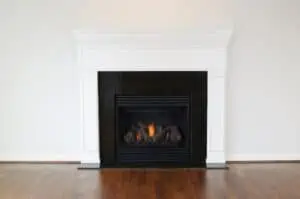How do you repair a fireplace that has a damaged chimney damper?
Fireplaces are a popular feature in many homes. They provide warmth and a cozy atmosphere, but they also require maintenance to ensure they operate safely and efficiently. One essential component of a fireplace is the chimney damper, which regulates the amount of air flowing in and out of the chimney. If the chimney damper is damaged, it can cause problems such as smoke in the house or reduced heat output. So, how do you repair a fireplace that has a damaged chimney damper?
(Looking For “Fireplace throat damper repair“? Contact us today?)

The first step in repairing a damaged chimney damper is to identify the problem. There are several signs that your chimney damper may be damaged, including difficulty opening or closing the damper, excessive smoke in the room, or a drafty fireplace. Once you have identified the problem, you can determine the extent of the damage.
If the chimney damper is only slightly damaged, you may be able to repair it. The first step is to remove the damper from the chimney. This can usually be done by removing a few screws or bolts. Once the damper is removed, you can inspect it for damage. If there are only minor issues such as a bent or broken rod, these can be repaired with pliers or wire cutters. If the damper is severely damaged, however, it may need to be replaced entirely.
If the damper needs to be replaced, the first step is to measure the opening of the chimney. This will help you determine the correct size of the replacement damper. There are several types of chimney dampers available, including throat dampers and top-mount dampers. A throat damper is located inside the chimney, while a top-mount damper is installed at the top of the chimney. Each type of damper has its own advantages and disadvantages, so it’s important to choose the right type for your fireplace.
Once you have the replacement damper, you can install it. If you are installing a top-mount damper, the first step is to remove the old damper and clean the chimney. Then, install the top-mount damper by attaching it to the chimney with screws or bolts. Be sure to seal any gaps between the damper and the chimney with a high-temperature caulk. If you are installing a throat damper, it’s important to follow the manufacturer’s instructions carefully, as the installation process may vary.
After the new damper is installed, it’s important to test it to make sure it’s functioning properly. Open and close the damper several times to ensure it moves smoothly and seals tightly. You can also test for drafts by lighting a piece of paper and holding it up to the damper. If the flame is drawn up towards the damper, it’s a sign that there may still be drafts in the chimney.
In conclusion, repairing a damaged chimney damper requires identifying the problem, determining the extent of the damage, and either repairing or replacing the damper. If you are not comfortable making these repairs yourself, it’s always best to consult a professional. Regular maintenance of your fireplace and chimney can help prevent damage to the damper and ensure your fireplace operates safely and efficiently for years to come.

